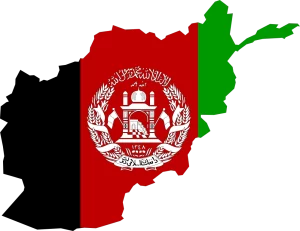Geographical position and Climate of Afghanistan
Afghanistan is a landlocked country located at the crossroads of Central and South Asia. It is bordered by Pakistan to the east and south, Iran to the west, Turkmenistan, Uzbekistan, and Tajikistan to the north, and China to the northeast.
Afghanistan has a continental climate with hot summers and cold winters. The country experiences wide variations in temperature due to its varying topography. Its high mountains create microclimates where conditions can be significantly different from the surrounding areas. Precipitation varies across the country but is typically sparse, making much of Afghanistan semi-arid or arid. Snowfall occurs in the winter months in many regions, particularly in the higher altitudes.
Places to visit in Afghanistan
- Kabul
- Herat
- Mazar-i-Sharif
- Bamiyan
- Kandahar
- Band-e Amir National Park
- Wakhan National Park
- Nuristan Nature Reserve
- Ajar Valley Wildlife Reserve
Before you visit Afghanistan
Travel to Afghanistan
By Air:
- Commercial Flights: Major airlines such as Emirates, Turkish Airlines, and Air India offer flights to Hamid Karzai International Airport in Kabul.
- Connecting Flights: It may be necessary to have one or more connections, commonly through Dubai, Istanbul, or Delhi.
With car & bus:
- Pakistan-Afghanistan Border: Traveling overland from Pakistan through border crossings at Torkham (near Peshawar) and Chaman (near Quetta).
- Iran-Afghanistan Border: Crossing points like the Islam Qala near Herat and the Milak crossing near Zaranj are options for land entry from Iran.
By Rail:
- There’s currently limited railway connectivity. However, there are plans to expand rail links from surrounding countries in the future.
Private or Charter Flights:
- For organizations or individuals requiring specific travel arrangements, private flights might be a viable option.
Note: Always check for current travel advisories and visa requirements before planning your trip to Afghanistan. The security situation can change rapidly, impacting available travel options.
Visas for Afghanistan
Tourist Visa:
- Application: Must be made at an Afghan embassy or consulate.
- Requirements: Passport valid for at least 6 months, application form, photos, and sometimes a letter of invitation.
Business Visa:
- Application: Similar to the tourist visa, but requires additional documentation such as a letter from the sponsoring company.
- Duration: Can vary; some business visas are issued for longer stays.
Work Visa:
- Sponsorship: Generally requires sponsorship from an employer in Afghanistan.
- Documentation: Includes proof of employment and may require additional clearances.
Student Visa:
- Admission Proof: Requires proof of admission to an educational institution in Afghanistan.
- Supporting Documents: May include academic records and evidence of financial support.
Diplomatic and Official Visas:
- Eligibility: For government officials, diplomats, and representatives of international organizations.
- Process: Usually facilitated through government channels with specific requirements based on the purpose of visit.
Transit Visa:
- Purpose: For travelers passing through Afghanistan en route to another destination.
- Limitation: Typically short-term, often 72 hours or less.
Important Notes:
- Visa on Arrival: Available only under specific circumstances, usually for business travelers and investors, and must be pre-arranged.
- Security Situation: Visa policies can change due to the security situation. Always verify with the nearest Afghan diplomatic mission.
- Registration: Visitors may need to register with the Ministry of Interior Affairs upon arrival in Afghanistan.
Before traveling, ensure you have the most current information, as visa regulations can change frequently. It’s also advisable to check your home country’s travel advisories for Afghanistan.
Best time to visit Afghanistan
Spring (March to May):
- Weather: Mild temperatures and blooming landscapes.
- Activities: Ideal for sightseeing and cultural festivals.
Fall (September to November):
- Weather: Cool and pleasant after the summer heat.
- Harvest Season: Opportunity to experience local harvests, such as pomegranates and grapes.
Note: Winter (December to February) can be extremely cold, especially in mountainous regions, and summer (June to August) can be very hot. Travel during these times may be more challenging.
Travel Advisory: Always check current travel advisories due to varying regional security conditions. The best time to visit can be heavily influenced by the political and security situation.
Important Information
Capital – Kabul
Territory – 652,867 km2
Currency – Afghani (AFN)
Time Zone – UTC+4:30 (Afghanistan Time)
Population – 41,128,771
Demonym – Afghan

